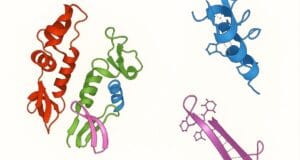
COMPETITIVE EXAM MCQs SERIES of ENVIRONMENTAL SCIENCE for UGC-NET/JRF, SLET, ARS, GATE, and other entrance tests – Statistical Approaches and Modelling in Environmental Sciences: Environmental Statistics and Sampling Theory.
Syllabus Outline
- Concept of probability sampling methods (e.g., simple random, stratified, systematic, and cluster sampling).
- Concept of non-probability methods (e.g., purposive and convenience sampling).
- Sampling distribution, standard error, confidence intervals, and sample size determination.
- Sampling vs non-sampling errors and optimal allocation techniques (e.g., Neyman allocation).
- Applications of different sampling techniques in air, water, and biodiversity monitoring.
- GIS-based spatial sampling and participatory methods.
This quiz contains concept-based, the most frequently asked 25 MCQs of “Statistical Approaches and Modelling in Environmental Sciences: Environmental Statistics and Sampling Theory”. Each question has a single correct/most appropriate answer.
*****
1. Non-probability sampling includes
I – Quota sampling, II – Convenience sampling, III – Snowball sampling and IV – Stratified random sampling
A) I Only
B) I, II and III
C) I and II
D) IV Only
2. Which sampling method involves dividing the population into mutually exclusive groups and then randomly selecting some groups for complete enumeration?
A) Stratified sampling
B) Systematic sampling
C) Cluster sampling
D) Purposive sampling
3. What does a 95% confidence interval represent in environmental statistics?
A) 95% of the data falls within this range
B) There is a 95% probability that the true parameter lies within this range
C) 95% of samples will have means in this range
D) The sample mean is 95% accurate
4. Which of the following is NOT a probability sampling method?
A) Simple random sampling
B) Stratified sampling
C) Purposive sampling
D) Systematic sampling
5. Sampling distribution refers to:
I – Distribution of individual observations
II – Distribution of sample statistics across multiple samples
III – Distribution of population parameters
IV – Distribution of sampling errors
A) II and III
B) I, II and III
C) III and IV
D) II Only
6. Which of the following sampling types would be preferred if you are performing a screening phase of an investigation of a relatively small-scale problem and you have a limited budget and/or a limited schedule?
A) Systematic sampling
B) Grid sampling
C) Composite sampling
D) Judgmental sampling
7. Advantages of following sampling design are (1) it provides statistically unbiased estimates of the mean, proportions, and variability, (2) it is easy to understand and easy to implement, and (3) sample size calculations and data analysis are very straightforward.
A) Systematic sampling and Grid sampling
B) Stratified Sampling
C) Adaptive Cluster Sampling
D) Simple Random Sampling
8. Which error type occurs due to non-response, measurement errors, or processing mistakes?
A) Sampling error
B) Non-sampling error
C) Standard error
D) Systematic error
9. In stratified sampling for air quality monitoring across different industrial zones, if stratum 1 has a variance of 16, stratum 2 has a variance of 25, and stratum 3 has a variance of 36, what should be the optimal allocation ratio using Neyman allocation?
A) 4:5:6
B) 2:3:4
C) 1:2:3
D) 16:25:36
10. In systematic sampling of forest biodiversity, if the random start is 7 and the sampling interval is 15, which of the following will be the 4th selected unit?
A) 37
B) 52
C) 67
D) 82
11. Which sampling method would be most appropriate for monitoring water quality in a river system with distinct upstream, midstream, and downstream characteristics?
A) Simple random sampling
B) Cluster sampling
C) Stratified sampling
D) Systematic sampling
12. The design effect in cluster sampling is typically:
A) Less than 1
B) Equal to 1
C) Greater than 1
D) Depends on cluster size only
13. For monitoring PM2.5 concentrations across a city, which spatial sampling technique would provide the most representative coverage?
A) Convenience sampling at traffic signals
B) Systematic grid-based sampling
C) Purposive sampling in industrial areas
D) Simple random sampling
14. In two-stage cluster sampling for biodiversity assessment, if 20 clusters are selected from 100 clusters, and 10 elements are selected from each chosen cluster, what is the overall sampling fraction?
A) 0.2/Cluster Size
B) 100/Cluster Size
C) 5/Cluster Size
D) 2/Cluster Size
15. The finite population correction factor is applied when:
A) The sample size is less than 5% of the population
B) Sample size is more than 5% of the population
C) The population is infinite
D) Sampling is done with replacement
16. In stratified sampling, if the within-stratum variance is much smaller than the between-stratum variance, the efficiency gain over simple random sampling is:
A) Minimal
B) Moderate
C) Substantial
D) Negative
17. In adaptive sampling for rare species monitoring, the sample size:
A) Is predetermined
B) Increases in areas of high-density
C) Remains constant throughout
D) Decreases with time
18. The precision of an estimate in simple random sampling is inversely proportional to:
A) Sample size
B) Square root of sample size
C) Population size
D) Population variance
19. For monitoring benzene concentrations in urban air, a researcher uses systematic sampling with multiple random starts. If 4 random starts are used with a sampling interval of 20, and the population size is 1000, what is the effective sample size?
A) 50
B) 200
C) 250
D) Dependent on the correlation between systematic samples
20. In model-based inference for environmental monitoring, the prediction variance at an unsampled location depends on:
A) Sample size only
B) Distance to the nearest sample point
C) Covariance structure and sampling design
D) Cluster variance and sample size
21. When using composite sampling for soil contamination assessment, the dilution effect can be corrected by:
A) Increasing sample size
B) Using appropriate statistical models
C) Adjusting detection limits
D) Stratifying the sampling
22. In network sampling for environmental compliance monitoring, the sampling frame is:
A) Predetermined and fixed
B) Evolving based on network connections
C) Random and variable
D) Stratified by network properties
23. For monitoring rare events in environmental systems, the most appropriate sampling distribution is:
A) Normal distribution
B) Poisson distribution
C) Exponential distribution
D) Gamma distribution
24. A researcher wants to estimate the mean dissolved oxygen level in a lake with 95% confidence and a margin of error of 0.5 mg/L. If the standard deviation is 2 mg/L, what is the minimum sample size required?
A) 16
B) 32
C) 62
D) 246
25. Assertion (A): Cluster sampling typically has a design effect greater than 1.
Reason (R): Elements within clusters tend to be more homogeneous than the overall population, leading to reduced effective sample size.
A) Both A and R are true, and R is the correct explanation of A
B) Both A and R are true, but R is not the correct explanation of A
C) A is true, but R is false
D) A is false, but R is true
*****
Previous: Concepts of Probability Theory
Next: Applied Statistical Distributions
References
- Gupta, S.P. (2020) Statistical Methods, Sultan Chand & Sons, 44th edition.
- Barnett, V. (2004) Environmental Statistics: Methods and Applications, Wiley, 1st edition.
- Manly, B.F.J. (2008) Statistics for Environmental Science and Management, Chapman and Hall/CRC, 2nd edition.

